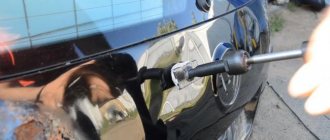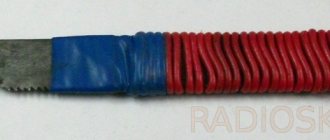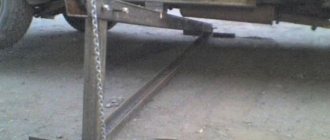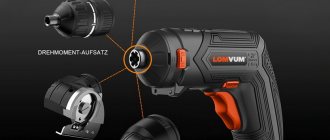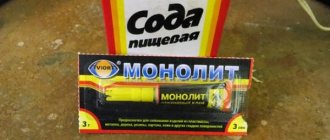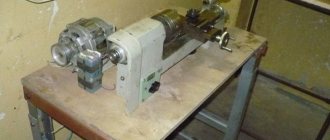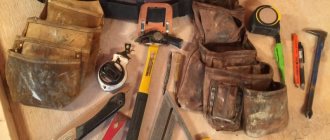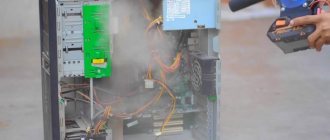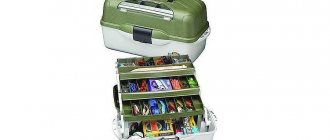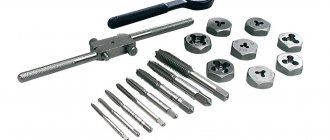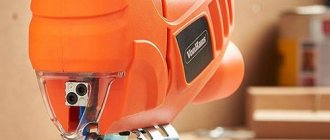Paintless Dent Repair (PDR) is a technology for repairing body dents while preserving the car's original paintwork. Paintless repair specialists use various PDR tools to attack the dent on the back side of the body panel, or pull it out from the front side with an adhesive system, or combine both methods. In addition, special punches and hammers are used to tap and lower the heights of the metal.
In this article, we will look at what tools are used for paintless car dent repair, their characteristics and methods of application.
The content of the article:
|
PDR Tools
The first teams of PDR specialists began to form in the quality control departments of auto giants. They needed to create the necessary tools to successfully straighten out the small dents that were sometimes created during the manufacturing and assembly of automobiles. Initially these instruments were homemade. They were converted from existing tools of “tinsmiths”, and also invented new unique devices and improved them over time. You can read in more detail about the emergence of paintless dent repair technology in the article “history of the emergence of PDR technology.”
Homemade paintless dent repair tools were used many years ago by the early PDR technicians.
PDR technology has improved significantly over the past 15 years. Nowadays, qualified PDR technicians can straighten quite complex dents without painting. This is possible thanks to the range of modern tools, as well as the elasticity of modern paint coatings.
There are now many manufacturers that provide a wide range of paintless dent repair tools and accessories.
PDR tools can be classified by design and by application (intended purpose).
By design, instruments can differ in bend (single, double, triple bend, or more complex shapes), tip shape, length, tool diameter, shape and configuration of the handle.
By application, tools can be classified depending on which body panels they are used on or what action they perform. For example, classic hooks (or rods, from the English rod) are designed to work in open, fairly accessible places, such as fenders, roofs, trunks, hoods. They work by applying pressure to the back of the dent. Another example is the whale tail tool. This tool, in contrast to classic hooks, is used in hard-to-reach narrow places and works due to the twisting action. Additionally, PDR technicians use special reflective panels to accurately “read” dents, LED lights, and an adhesive system to pull out dents. Correcting different dents may require the use of multiple tools. The more tools you have at your disposal, the more freedom and flexibility you will have to repair a specific dent.
Next, we will look in order at the various tools that are used for paintless dent repair, as well as the necessary accessories.
PDR hooks (PDR rods)
PDR hooks are the staple tools that fill a craftsman's toolbox. Various in shape and size, they are used on every panel of the car. Most craftsmen use a rigid hook (or rod) 120 cm long for all open, fairly accessible places, such as roofs, hoods, trunk lids, fenders. Shorter versions of the same hooks are used for doors. Hooks can provide consistent and very controlled pressure to lift metal.
Hooks differ in length (from 40 cm to 2 m), bends, diameter and tip shape. It is better to have a set of different hooks, from which over time you can choose the ones that are most preferable for the job.
Some PDR tool companies create ratchet handle pdr tools. This is a great addition because the technician can use one tool for different positions and apply different amounts of force on the lever. Hooks are available with interchangeable tips, making one tool more versatile and saving space in your toolbox or bag.
Door hooks PDR (PDR door hooks)
Door hooks are used to work with door damage through the gap between the door glass and the panel, allowing you to straighten dents without having to remove the trim. Door hooks have different bending angles (from 90 to 180 degrees) and different lengths, with a narrow tip for better maneuverability. For ease of operation and increased functionality, door hooks can have a rotary handle.
These hooks are mainly used on the top of doors.
Brace tool (eng. brace - bracket, spacer)
Tools for use under panel reinforcements. There are versions for left and right hands. Designed to maximize reach and minimize ridges from tool use. This tool is often used to repair hail dents.
Dent Reaper
This type of hook is quite new. Dent Reapers provide strong pressure, do not bend, and have sharp tips for finishing.
Sickle/scythe hooks work well in doors and can also be used on other panels. They are “powerful” and precise in application. Increases work efficiency. Excellent for working with aluminum panels.
Knife-shaped/knife “shaved” hooks ( SHAVED TOOLS )
Knife/knife-shaped or “shaved” (from English shaved) hooks are designed to work in areas of difficult access, in narrow cavities, under amplifiers.
This tool is a hook with the barrel cut at an angle from the base to the working part. Shaved hooks come in different sizes. What they all have in common is slim design and flexibility. In terms of capabilities, these hooks are close to the “whale tail” tool, but they have a different principle of influencing the dent. Used to repair hail dents, especially under hood, roof and trunk reinforcements. Well suited for work in the rear fenders, where two metals are pressed closely together. Also good as an auxiliary tool, helping with finishing work in the final stages.
Due to the thin barrel, “shaved” hooks are not used on hard places, curves, or dense metal.
Whale tail
Whale tail instruments are named after the shape of their tip. They provide leverage at the edges of the tip. Whale tails come in different lengths from 10 cm to 150 cm with tips of different widths (from 1 cm to 10 cm - ultra-thin, thin, standard, wide and extra wide). The tips are completely rounded at the top.
They are used to work under panel reinforcements. Whale tail tools are not the easiest to learn. They work by twisting rather than pushing/pressing like regular hooks.
Tools with replaceable tips
Interchangeable tips allow you to use one tool in different situations, replacing several tools, which increases its flexibility of use and saves space in the master's bag or drawer.
Replacement attachments are designed for use with hooks, punches and hammers that are threaded for them. Nozzles or tips come in different shapes and sizes, and are also made of different materials, which gives them differences in properties (in particular, different hardness). The most common ones include coated, plastic, uncoated steel, pointed, rounded, and mushroom-shaped tips. Each tip plays a different role. Generally, the larger the dent, the larger the tip of the tool. However, you need to consider each dent, take into account its structure and choose the most suitable tips and methods of exposure. Typically, straightening starts with large tips to reduce the overall size of the dent, and then gradually reduces the tip size as the dents become smaller.
Let's look at the types of replacement tips installed on hooks and when they are used.
- Tips are made of different materials (steel, plastic, rubber and others). Some have a coating (PVC or rubber) that acts as a damper to soften pressure on the panel. When using uncoated metal tips, you need to be careful and know what you are doing, as bare metal can damage the paintwork if pressed hard. Coated or plastic tips are safer in this regard.
- Large mushroom tip with PVC coating. This tip is great for removing large, “soft” dents. It is suitable for quickly lifting large areas of metal. The mushroom shape is useful in cases where a lot of pressure is required on the dent. This tip provides very strong leverage. This type of tip comes in different sizes. The larger size acts the same as the small one, but with an even greater range.
- A large round rubber tip is used to start pressing out large dents.
- A plastic conical (pointed) tip works well on body lines (stiffeners, edges). The pointed plastic tip, if pressed too hard, can crush the metal and create a raised area, but will not damage the paint, unlike metal. That is, the likelihood of straightening the “edge” of the body increases before you damage the paint. Plastic can vary in rigidity and have different effects on metal. Stiffer plastics can be used on both aluminum and steel panels. Softer plastic will not be able to dent an aluminum panel with sufficient force, since this requires a stronger force than steel. With strong pressure, a sharp tip made of soft plastic may lose its shape and the pressure will not be clear; a harder material retains its shape and provides a clear, strong pressure.
- Sharp metal tip. Its location is easier to determine from the back of the panel, as it gives a clear point effect. When using a sharp metal tip, you need to clearly know what you are doing. This type of tip cannot be pressed randomly onto the metal, as this will create many sharp peaks. The sharp tips can become dull over time, so you can adjust their shape yourself, if necessary.
- Slightly tapered tip. It is best suited for small dents. Its shape will give you precision but little leverage.
- The tip is cone-shaped with a rounded center. This tip provides sufficient force and is quite accurate.
- Roller Rod Tips allow you to apply more pressure to the panel without leaving a raised area, thereby increasing the visibility of the tip from the back of the panel. Wider rollers allow you to straighten larger and deeper dents with less tendency to tear the paint or stretch the dent. A roller tip with a thinner profile is used for finishing the panel. These tips can have different hardness, as they are made of hard or soft plastic.
Content
Process Features
Removing dents from the inside mechanically
External leveling with special equipment
Correction with a magnet
Removal using a hair dryer
Percussion
Recommendations from the author
If the paint layer has not been damaged due to deformation of the car body, dents can be repaired without painting. Quite high-quality paint and varnish materials are now being produced. Special technologies and special admixtures are used, which ensures the durability and strength of the coating.
Advantages of paintless dent removal:
- appearance in most cases is completely restored;
- increased process speed;
- body treatment in a gentle mode;
- a fairly cheap way to eliminate defects.
Process Features
Paintless dent repair helps car owners save significantly on repairs. Paintless repairs also take significantly less time and labor. Minor dents, if you have the necessary skills and tools, can even be made independently. If you are not confident in your own abilities, it is better to turn to specialists. It will take an average of 15 minutes to two hours for a technician to repair a small damage at a service station.
This type of repair is carried out without removing the part from the car, using special tools.
There are several options for such straightening:
Removing dents without painting, vacuum straightening
The glue method is more modern. It is used to correct the body in places with limited access. The good old leveling method, proven over the years, allows you to level dents from the inside using special tools. One of the most effective methods to rid a car part of dents is straightening.
Sometimes it is impossible to level out dents without a painting procedure:
- if the paintwork is damaged;
- severe deformation of the body;
- poor-quality paint layer;
- the car is over 15 years old.
To pull out dents without painting, you can use both improvised means and professional tools. The latter are expensive and are already sold in sets. If you are not seriously involved in straightening cars, then it is more advisable to use improvised means.
Removing dents from the inside mechanically
The technology for straightening dents without applying paint is used in cases where it is problematic or impossible to remove them from the outside with conventional tools. The principle by which dents are removed mechanically is a pressure difference. To remove minor damage, use vacuum hoods. For other mechanical straightening work, various levers are used, as well as fluoroplastic bumpers.
You should very carefully calculate the force of pressure on the area being leveled; if you overdo it, you can end up with unevenness and peaks on the reverse side, which will then have to be eliminated, which will not be entirely easy to do.
Technology for local body repair of dents without painting
When performing mechanical alignment, you should place the desired lever in the technological hole in the car body, trying to place its end as close as possible to the defect. Next, using gentle pressing movements, level the surface to its original state. When straightened, a slight click should be heard.
External leveling with special equipment
It happens that the dent is in a place where it is impossible to access from the inside. You can use this method by using the adhesive technique. To do this, you need to glue a special piston to the surface and simply pull out the dent.
More often, another method is used. It will require glue and adhesive applicators, which should be fixed to the surface of the dent. Next, everything is done in exactly the same way as with the help of pistons. Glue residues are easily removed from the surface of the car body after the alignment procedure is completed.
Correction with a magnet
The method is very simple. Magnetic dent repair is performed by pulling the damage from the edge towards the center. The tension force should be directed towards yourself. As a result, the dent gradually levels out. Do not forget to place a rag or other support under the magnet so that as a result of work you do not scratch the varnish or paint.
A device for removing, eliminating and repairing dents on cars without painting
Removal using a hair dryer
A high-temperature method, when using which you should take care of your own safety and wear goggles and protective gloves. To work, you will need a hair dryer and a can containing compressed air. The principle of this method is the temperature difference on the surface of the car. First, it is heated with a hairdryer to the desired temperature, and then cooled using a can containing compressed air. When using a hairdryer, heating is available from plus 300 to 650 degrees Celsius, and using a spray can, cooling to minus 78 degrees is available.
Depending on the shape of the dent on the “iron horse” part, select the locations of the impact points. For large damage there should be several of them. With a round shape, the work points are located along the radius of the damage, with an oval shape - along its shortest side. If removing dents on a car without painting using a hairdryer could not be completely straightened, complete the work using the tapping method.
Percussion
The method is used when the dent on a car is large. To carry out repairs using this method, rubberized mallets and hooks of various shapes will come to our aid. The job description is in the title itself. To level out a dent using tapping, you need to tap the damaged area from the inside. If the dent is in a hard-to-reach place, hooks are used. After completion of the work, polish the surface.
The method is used when the dent on a car is large
Recommendations from the author
Before starting any repair work, you should realistically assess your capabilities. If you suddenly doubt that you can perform high-quality dent removal with your own hands, it is better to seek help from specialized service centers, where trained technicians will help you repair your car quickly and, most importantly, efficiently.
If you decide to make the repair yourself, carefully assess the degree of damage to the body in order to correctly determine the method by which you will level the surface.
Before starting work, any repair technology that has been chosen should be tested on parts that are not needed. To ensure that your car is restored at the proper level and does not create even more problems, carefully read the instructions and review the photos and videos. Following simple instructions and recommendations will allow you to successfully complete the job of straightening dents without painting and enjoy driving your repaired car.
And we have a channel in Yandex.Zen
Subscribe to receive the latest materials as soon as they are published!
Hammers, smoothers and supports (counter supports) for repairing dents
Hammers, trowels and supports have been used in auto body repair to straighten dents for a long time. They are also used for paintless dent repair, but they differ from conventional tools for body repair. Supports and smoothers for paintless dent repair have a perfectly smooth, polished surface or contain a softening coating so as not to leave any marks or damage on the paintwork when exposed to the panel.
- Paintless repair hammers are used to lower high spots. They can have replaceable attachments to change the characteristics of the striker.
- Supports (or counter supports) are auxiliary tools used to support the metal on the back of a panel when straightening with a hammer or float. There are many different shapes and sizes of counter supports. Selecting the correct shaped support is critical to the outcome of the repair. It is selected taking into account the bend of the panel being repaired. The counter support provides support for the panel and prevents undamaged areas from being crushed. An example of using support would be leveling (tapping) hills around dents from large hail. Such dents can be about 10 cm in diameter. To eliminate the bulk of the damage, it is necessary to remove the high spots around these dents. This is where supports and special hammers come into play.
Smooth with a soft pad to soften the impact.
- A smoothing iron is a hand tool with a smooth spring steel surface that is great for smoothing corrugated metal. The trowel controls more impact surface than any hammer. At the same time, it is easy to use. The float is used with support when lifting metal and can be used without support to lower elevated areas. The smoother may have a leather pad on the front side to soften the impact.
Punchers (cores, cue balls)
A punch (also called a core or cue ball, English knockdown tool) is an essential PDR tool. You will use it regularly. Most high-quality craftsmen can boast that they limit the use of a punch, but there is not a single craftsman who could do without it.
With paintless repair, dents are not just sharply straightened out from the impact on them, they are slowly and methodically squeezed out with hundreds of tiny pressures. Sometimes the pressure on the metal is past where it should be. This can be accidental, and sometimes even on purpose. This creates hills that need to be removed with a punch. The tip of the punch is located directly at the high point and lowers it down by hitting the PDR punch with a hammer or other light object.
On some dents, it is necessary to tap the raised areas around their perimeter to relieve stress and soften the metal before straightening the metal begins.
Punchers can be made of different materials and also differ in the shape of the tip. They can be blunt, sharp, rounded, or mushroom-shaped. The sharpness of the tip depends on the size and shape of the hills. Tapping with a heavier punch (such as steel) with a soft, rounded tip will take much less time to move the same amount of metal than tapping with a lighter nylon punch. A lighter punch requires much more hammering or striking force to create the same impact as a heavier punch.
The type and material of the hammer used to strike the punch does not matter much; what is important is its weight, which will affect the force of the blow. In addition to the hammer, you can use other objects if it is more convenient for the master.
It is recommended to purchase one punch with replaceable tips.
In general, to tap high spots during dent repair, either a punch or a special hammer without using a punch can be used. So-called blending hammers are best used for larger, softer high points. Punchers are generally best suited for sharper elevations.
Body diagnostics
Before you begin the car repair itself, you need to carefully inspect the car body. It is better to do this in good light - this way all the damage will be
Please note that if more than one dent is found on the surface of the car, repair work should begin with the smallest damage, gradually moving to the largest.
Also, before you start pulling, you should make sure that the paintwork is in good condition. If the paint is badly damaged, straightening without painting will not be possible. In this case, the defect will have to be removed using the traditional method of straightening the car.
Removing dents without painting
Adhesive system
The PDR adhesive system is designed for pulling out dents from the face of a panel and includes a glue gun with special glue sticks, special pull-out clips, pull-out devices and a tool for removing glue from panels and clips.
- Glue guns come in electric (corded or battery-powered) or gas. Glue sticks, as a rule, differ from the usual ones sold in hardware stores, have better adhesion, and are more durable. The rods come in different colors, which marks their characteristics. They mainly differ in the temperature at which the repair will be carried out, as well as the strength of the bond.
- PDR Pull Clips come in different sizes, shapes, designs and colors. They can also vary in strength. As a rule, the shape of the clip is selected to match the structure of the damage. Now there are special reinforced long strips that replace several clips and make it easier to pull out complex dents.
- Pulling devices. Once you have the clip glued to the dent, you will need a puller to pull one or more of the clips. For pulling, a sliding hammer, a mini-lift, a large lifting device, or a lever-type device is used. Different devices must be selected depending on the damage. Don't expect a blowback hammer or mini lift to pull out a dent in a panel and return the metal to factory condition with minimal effort. It is more correct to perceive these devices as one of many tools that you may need to achieve results. You may need to do several repeated stretches. You may also need to tap the high spots around the dent with a special punch and use PDR hand tools to finish the bumps.
- Glue remover. Sometimes the adhesive is not easy to remove from the panel or clip, in which case you will need a tool to make the adhesive easier to remove. There are special formulations, and you can also use alcohol.
For professional use, harder types of clips are most often used, while softer clips provide less precise control over tension.
“Glue Pull Repair” (GPR), used without or in combination with PDR tools, has become a very powerful system thanks to its wide range of different types of glue, clips (or pull bars) and many pull devices. A modern adhesive system with all accessories and additional tools allows you to replace the use of a spotter and many other straightening tools.
Mechanical method of removing dents from the inside
If it is quite difficult to get to the dent area, then in addition to special levers having different working lengths and ending shapes, you can use a vacuum hood applied to the defect area. As a result of the planned impact on it, the metal acquires its original appearance due to the “massage” carried out from the inside due to a pressure difference that helps relieve local tension.
In order to remove a dent using a set of levers, you should use access through the most suitable body technological holes. Straightening the metal is carried out by a series of gentle pressing or rotational movements, helping to return the surface to its original appearance.
The procedure must be carried out with extreme caution to ensure that no peaks or edges are formed. If their formation could not be avoided, the extrusion operation is stopped immediately, and to eliminate the resulting flaw, a fluoroplastic pencil complete with a hammer is used for tapping.
Pneumatic suction cup puller
The pneumatic suction cup is sold in a set with several suction cups of different sizes (usually three). Depending on the size, it can create different pulling forces.
It is attached to the rods of a sliding reverse action hammer. The suction cup is made of rubber and plastic. The suction cup can work with both metal panels and plastic bumpers.
This tool can remove large dents very quickly. Used at the initial stage of repair, to eliminate the bulk of dents.
Magnet
A magnet is a device used to pull out dents. The device is used together with a rag, which is placed under it at the time of use. This condition ensures protection of the coating during leveling.
The device is used to smooth out small damage. Using this tool does not require labor-intensive physical effort. The easiest way to pull out a dent is with a magnet, so you can carry out restoration work yourself.
A magnet for straightening the coating is a special device sold in car dealerships. It is not recommended to use homemade devices for this purpose.
Auxiliary accessories
Accessories for working with doors through a window opening (window protector PDR and wedge)
To repair door dents, PDR tools are typically positioned between the door panel and the door glass. To prevent damage to the glass, a window protector with a special wedge is used. All you need to do is lower the glass down, insert the wedge and protective protector, creating space for the tool to work. Also, instead of a wedge, an air cushion is used, which easily increases the gap between the glass and the panel, providing better access for the tool.
There are different types of protectors on the market, but the most common is a plastic or metal sheet with a right angle at the edge.
Before you start working with doors, you need to consider the type of glass installed in them. Typically, side windows are made of stalinite (tempered glass), but some modern cars may now have laminated side windows. For this type of glass, the pressure that can be applied to them during repairs (even through a plastic protector) is critical.
Before repairing, it is better to always check the glass of the door on which the dent will be repaired. Laminated glass can be recognized by its 2-layer structure, which can be seen at the top of the glass. If the glass looks like 2 layers glued together, this is a sign of laminated glass. In contrast, the layering will not be visible along the edge of a piece of tempered glass. It will look like a completely smooth, solid piece. Also in the corner of the glass there may be the designation “laminated” or “tempered”.
If the glass is laminated, it is better to follow the following recommendations to minimize the likelihood of damage to the glass.
- Remove the molding at the top edge of the doorway.
- Lower the glass so that it protrudes about 7–8 cm from the opening.
- Use an air cushion to create space between the glass and the panel. Do not use a wedge for this as the pressure on laminated glass is dangerous.
- Always use a metal glass protector for laminated glass.
Removing the molding from the top of the door allows more clearance to insert the tool between the glass and the door panel. This will provide enough space for the tool. By leaving 7-8 cm of glass raised, you can apply more even pressure to the center of the glass with the air cushion, rather than concentrating all the pressure on the top edge. The metal protector also helps dissipate the pressure you will apply to the glass with the tool.
Since laminated glass is easier to damage than tempered glass during PDR door dent repair, sometimes if the car is expensive, the safest way is to remove the door inner trim and glass.
Hood stand _ _
The bench is typically used to repair dents on the hood when they cannot be repaired on the car. The stand simplifies the work. The panel is firmly fixed on the stand and the master can easily access the back side at any point.
Modern stands have adjustments, which allows them to be used for hoods of different sizes, as well as for trunk lids. The stand folds easily for compact storage.
Stops, clamps, hangers
To repair dents on a car body, in addition to special tools, stops and clamps are required. It is important to fix the movable panel being repaired (hood, trunk lid or door) in a convenient position. For this purpose, special stops and clamps are used.
The hangers are designed to provide support and proper leverage for the hooks when repairing dents. Usually attached to the technological holes of the body. They come in different shapes and sizes. Carbines are also used for these purposes. They hold larger instruments while removing extensive damage.
Knives for cutting sealant
Knives for cutting sealant are necessary when repairing dents under reinforcements. The knife allows you to carefully cut off the sealant without scratching the paintwork. These knives are sharp and flexible. They can have different lengths and different handles.
Vacuum
Removing dents without painting using the vacuum method is similar in process to adhesive technology. However, it has one undeniable advantage over it. Once the repair is complete, there is no need to remove the adhesive at the risk of damaging the paintwork or re-deforming the surface.
Removing a medium-sized dent on a car is done using a vacuum suction cup. Different models have different sole areas. The ideal option is when the sole of the suction cup is slightly missing from the border of the defect.
The preparatory process is limited only to cleaning the working surface. A vacuum is created in the installed suction cup using an electric or manual pump. After achieving a tight and reliable fit, the hose is disconnected and you can begin straightening the dents.
After the surface has taken on its original appearance, a special valve opens and the suction cup is easily removed from the car body.
PDR lighting
Lighting and reflection is one of the most important components of a PDR repair. PDR lamps are used indoors and allow a specialist to see dents on car body panels in more detail. There are two types of lighting currently in use: fluorescent and LED. With the introduction of LED lighting, things have definitely changed. LEDs allow you to have more compact, lightweight and very durable lamps. LED panels can change the light intensity, and even color. This is necessary for cars of different colors. For example, light-colored panels may be difficult to repair without painting using a standard white light PDR lamp.
Lamps for PDR repair may contain a special light diffuser. Usually these are parallel lines or the so-called fog board. The color and design used on the face of the lamp is the personal preference of the artist. Such diffusers or screens can be purchased separately and placed on the lamp or replaced with an existing diffuser. They help achieve high detail defects.
Reflective screens (reflective screens/panels) are a panel with a specific pattern (usually parallel lines). They, unlike a special lamp with lines, do not produce their own light, but reflect existing light (for example, sunlight) and cast lines onto the panel being repaired, helping to better see the damage.
So the purpose of the PDR light (or reflective screen) is to allow the technician to see the damage pattern that is happening inside the dent. By reading shadows and distorted reflections, a specialist can determine where the metal is high and where it is low. The craftsman also uses reflection to guide the tip of the tool exactly where it should be. Further, the reflection helps to monitor the repair process, allows you to develop precise force and stop pressing in time. After manipulating with the PDR tools, once the distorted lines become parallel in the panel reflection, the dent will be successfully corrected.
PDR lamps come in different sizes and variations. In general, they can be divided into stationary lamps for workshops and portable ones.
- Stationary lamps are mounted on collapsible tripods, allowing you to work with large volumes of damage. They can rotate and can be installed at any angle. These lamps are useful for repairing hail damage and can illuminate the entire roof or other panels.
- Portable PDR lamps usually range from 25 cm to 50 cm in length. They are easy to move and are usually mounted on the car using a suction cup. Mobile lamps are designed to work both in stationary conditions and on the road. They allow you to work with minor damage and damage of medium complexity.
When choosing a PDR lamp, consider the following factors:
- Size
- Ease of installation and setup
- Personalization (can you change the light intensity, color)
- Battery life (in the case of a portable lamp)
- Durability
Method of surface tapping car dents
If it was not possible to completely pull out the dent using alternate heating and cooling, then its residual signs can be removed using a mallet whose head is rubberized. It is with its help that the surface is tapped to remove residual stresses. Thus, it is possible to fix medium-sized dents.
To more accurately carry out the tapping operation, the use of a fluoroplastic pencil will be acceptable. It greatly facilitates the work and has a gentle effect on the paint surface without damaging it. The entire procedure ends with a surface polishing operation.
Let us add that for better correction, it is advisable to use special lamps that produce elongated highlights on a glossy car surface and help to better see the dents on it.
PDR Tool Kits
Tools for paintless dent repair can be purchased individually or in kits. Kit sizes range from simple starter kits to complex professional kits. Before purchasing, it is better to study different tools so that you have an idea of what is offered to you.
It is better to buy tools not in sets, but separately. The kit may not include hooks, but may not include the tools you need. In any case, you need to study the assortment before purchasing.
Which tool should I choose to repair a specific dent?
Tools come in different lengths, shapes and sizes. Each tool is uniquely designed for a specific purpose, and a PDR technician has a variety of tools to access even the most difficult to reach areas of the vehicle.
How do you know which tool to use for a certain dent? There are two main things to consider, one is “reach” and the other is “leverage”. That is, whether you can reach the back of the dent and whether you can influence it. This will help narrow down your choices among the available tools.
It really doesn't matter what tool you use, the main thing is to get the result. There may be more than one way to repair the same damage. In addition to the classic PDR hand tools, do not forget about the capabilities of the adhesive system. With its improvement, the possibilities of paintless dent repair have expanded significantly.
Brands of PDR tools
Now there are many different companies producing PDR tools and accessories. It is better not to buy cheap analogues from unknown companies or even kits without a name. Tools from well-known, proven brands are thoroughly tested and tested by experienced paintless repair specialists. Specialists from PDR tool manufacturing companies maintain feedback with craftsmen and also take into account requests for the necessary modification of some tools.
The highest quality and most proven instruments are from American companies, such as Dentcraft Tools, A‑1 Tools , PDR Finesse Tools, Ultra Dent Tools and others. Also worth mentioning are KECO and Blackplague PDR, which sell innovative tools and adhesive system materials for pulling out complex deformations.
